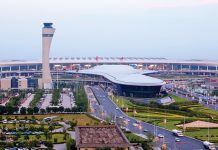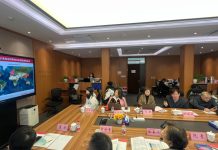BEIJING: In five whirlwind days, the city achieved an impressive turnaround: completing a citywide nucleic acid testing of 11 million residents, finding patient zero of a new cluster of local COVID-19 infections, and confirming no risk of community infections.
With its swift response after local infections re-emerged, the eastern Chinese coastal city of Qingdao has managed to safeguard China’s success in epidemic control.
Citywide testing
At midnight on October 11, many residents in Qingdao still tossed and turned in bed, looking for information on the new local COVID-19 infections on their cellphones.
The local health commission reported three new asymptomatic cases of COVID-19 in the daytime, adding that the specific source of infection was still under investigation. After another nine infections were reported around 3 a.m. on October 12, the commission was worrying that COVID-19 was poised to make a comeback in the city.
Given the uncertainty surrounding the source and scale of the new outbreak, Qingdao initiated a citywide nucleic acid testing campaign covering all 11 million residents and vowed to complete it within five days starting from October 12. Residents started to line up at testing points on squares and playgrounds as well as in parks. “It was a responsible move for the good of everyone,” said a local resident surnamed Wang.
To ensure the citywide testing was completed on time, authorities in Shandong Province, where Qingdao is located, dispatched more than 1,200 medical workers from provincial hospitals and other cities to assist with testing, said Chen Wansheng, an official with the municipal government of Qingdao.
Luan Chunlei, a nurse from Longkou city, about 210 km away from Qingdao, worked from noon to 9 p.m. without food or drink on her day of arrival. “We have to change our protective suits after eating or drinking. It’s a waste of time as so many people are waiting in line,” said Luan. More than 10,000 medical personnel were deployed to conduct sampling at over 4,000 locations, according to Chen. The increasing testing capacity in China supported the speedy citywide testing. “The maximum daily testing capacity was only about 2,000 samples in February in Qingdao, and it has reached more than 260,000 now,” said Xue Qingguo, deputy mayor of Qingdao. Some of the samples in Qingdao were transported to neighboring cities for testing, as samples must be tested within 12 hours of collection, Zhao Guolei, deputy director of the municipal health commission, told Xinhua.
Medical workers used batch testing, which combines samples from no more than 10 people in a single test, to boost efficiency.
As of 6 p.m. on October 16, nearly 10.9 million samples had been tested. Some testing points remained open for two more days, and 10.92 million samples had been tested as of 2 p.m. on October 17, with no new positive samples found.
The Shandong provincial government dispatched over 30 epidemiologists and nearly 800 police officers to investigate the infection source as well as the transmission route.
– The Daily Mail-Beijing Review News exchange item






